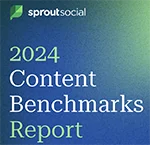|
|
History has taught us that the ever-evolving public relations industry can be fickle. The metrics that meant something last year are often quickly discarded as being behind the times, and the platforms that everyone was pushing as the next big social media landscape are left languishing under Twitter and LinkedIn’s dominance.
Already, 2018 has brought in a host of trends, some which look to have staying power, others that could be forgotten by Valentine’s Day. Here are just a few that I expect will actually stick, proving their worth for years to come.
Personal branding and thought leadership are expanding beyond top executives
The way we discuss personal branding and thought leadership must change. Thanks to Professor Google, customers are smarter and savvier than ever. Instead of looking to the C-Suite for thought leadership, they want to know what actual on-the-ground experts have to say.
Investing in subject matter experts outside the traditional leadership structure will position your company to be true thought leaders by providing a mix of technical information and real world application. That kind of trusted, no nonsense expertise drives brand awareness well beyond messages from your CEO. By developing experts at all levels, you have a greater opportunity to engage and connect with your audience in multiple areas. Our industry demands such change.
Agencies are becoming more specialized
In a crowded market, it’s nearly impossible to get your voice heard through all the noise. Much like media outlets, PR agencies are developing specialties as a way of adding value to their traditional services.
This is especially attractive to companies who might not have the in-house talent to attack a specialized project. And it’s a good way for agencies to get their name out there floating above the industry behemoths. Whether your agency is a start-up or well established, it’s practical to break out of a saturated market by seeking specializations for public sector work, commercial tech, financial or consumer sectors.
With reduced budgets and team sizes, it’s nearly impossible for internal communications teams to handle everything without fail. Consider that the government recently passed an IT modernization package that assists agencies in embracing the latest tech to realize a more mobile and secure workforce. That kind of project could be ripe for an agency with a public sector or technology specialization. Private companies that don’t typically cater to the public sector may use a particular agency to support their efforts in that space. This isn’t only practical but also prudent in an agency world that’s becoming more and more specialized.
Set goals that actually mean something
Setting appropriate goals and objectives early on can make or break an agency’s bottom line. Whether big or small, the process should begin with an evaluation of audiences across each vertical alongside developing a substantive guide for appropriating agency solutions, which include the correct media to approach or a clearer understanding of your target market.
Educating the target audience while driving impressions to your site or perhaps a byline/op-ed is meant to enhance the bottom line. Agencies of all sizes should keep budgets tight and specific.
PR and MarCom goals and objectives are going to continue to become more important to the bottom line. As such, let’s try to keep things simple by simply asking, what the target audience, which Marcom tools fit our likely goals, how much room should we leave for flexibility and what’s the budget going to look like?
Content will continue to be king
Utilizing a particular platform to develop thought leadership and brand awareness will mean a more sustained effort toward rich media content. Images, infographics, videos and gifs have all become part of the communications industry lexicon.
But how do these tools elevate the bottom line and build firmer relationships with clients? Most agencies understand the importance of blogs in conducting SEO campaigns, particularly the capacity for written content to drive agencies ideas around niche topics.
But to get the most out of your content, you have to ask whether you’re using social media as a real tool or simply because everyone else is doing it.
A decade ago, IBM launched their Smarter Planet Program, starting a conversation on tech-focused enterprise needs and the evolution of the global workforce. Within two years, they had pulled in billions in profits by leveraging a brand through substantive story telling.
Agencies took notice and have since worked to develop their voices by utilizing varied media platforms. In 2018, with so many voices leading each vertical it’s beneficial for agencies to leverage each and every available media platform to solidify a particular niche and dominate relevant conversation. This doesn’t just mean having a versatile staff but also understanding where to allot finances for campaigns as well as placing your staff on projects where they can thrive.
Move beyond social with the help of influencers
There will continue to be a melding of paid/earned content strategies, especially in social media. Promoting posts and profiles with paid strategies isn't just and add-on effort anymore; increasingly, it's becoming part of the overall strategies clients are asking for. With so much information flooding audiences, it’s critical that efficient filters are set in place to mitigate the deluge. Paid media serves to target those audiences.
Further, content strategies allow for clients to capture and control their own story. Don’t think it’s important? Well, look no further than some airline and food companies that have been trounced on social media in the past year.
Take some minor steps toward increasingly your visibility: get influencers to promote your content, attend and leverage industry trade shows and be more active on social media to expand client reach.
Influencers are critical, particularly on social media. In 2018, influencer marketing will continue to become the rule rather than the exception. In effect, capturing and controlling the zeitgeist surrounding a client will be critical. Luckily, influencer marketing methods and metrics will continue to improve as new measurement capabilities come into play.
Embrace the unexpected
Beyond the emerging trends from thought leadership to strategic MarCom goals, and earned content strategies to influencer marketing rests an unavoidable reality: the bedrock of a thriving agency lies in its ability to be malleable and to try new and unproven techniques.
An unwillingness to embrace the future will leave your agency in the dust. So, take that brief moment to sit through the social media webinar you were planning to skip, or go the local PRSA meeting that you’ve been promising yourself you’d attend. Even consider leading your own learning session and sharing some common challenges and solutions. Bridging the divide and creating clear lines of communication will push your agency bottom line well beyond the New Year.
***
Brian Kelley is the VP of public relations and public affairs at Sage Communications. A graduate of West Virginia University, he also leads Sage's employee experience, helping shape and develop company culture and a learning work environment for all employees. Based in Washington, DC, he has over 16 years in the industry, leading award winning campaigns and programs for his clients.

 Brian Kelley
Brian Kelley
 What if companies could harness the fury of online outrage into a force for good? This is precisely where companies can start turning the trolls into brand champions.
What if companies could harness the fury of online outrage into a force for good? This is precisely where companies can start turning the trolls into brand champions. Audiences interacted with brand content far more often on Facebook and Instagram in 2023 than they did via X (formerly Twitter), according to a report that tracked engagement trends across different social networks.
Audiences interacted with brand content far more often on Facebook and Instagram in 2023 than they did via X (formerly Twitter), according to a report that tracked engagement trends across different social networks. Can public relations help counteract the dissension fostered by the power of digital platforms to spread hate, fear and confusion?
Can public relations help counteract the dissension fostered by the power of digital platforms to spread hate, fear and confusion? The number of Americans who get their news from TikTok has quadrupled in the last three years, according to a recent Pew Research Center report.
The number of Americans who get their news from TikTok has quadrupled in the last three years, according to a recent Pew Research Center report.


 Have a comment? Send it to
Have a comment? Send it to 
No comments have been submitted for this story yet.